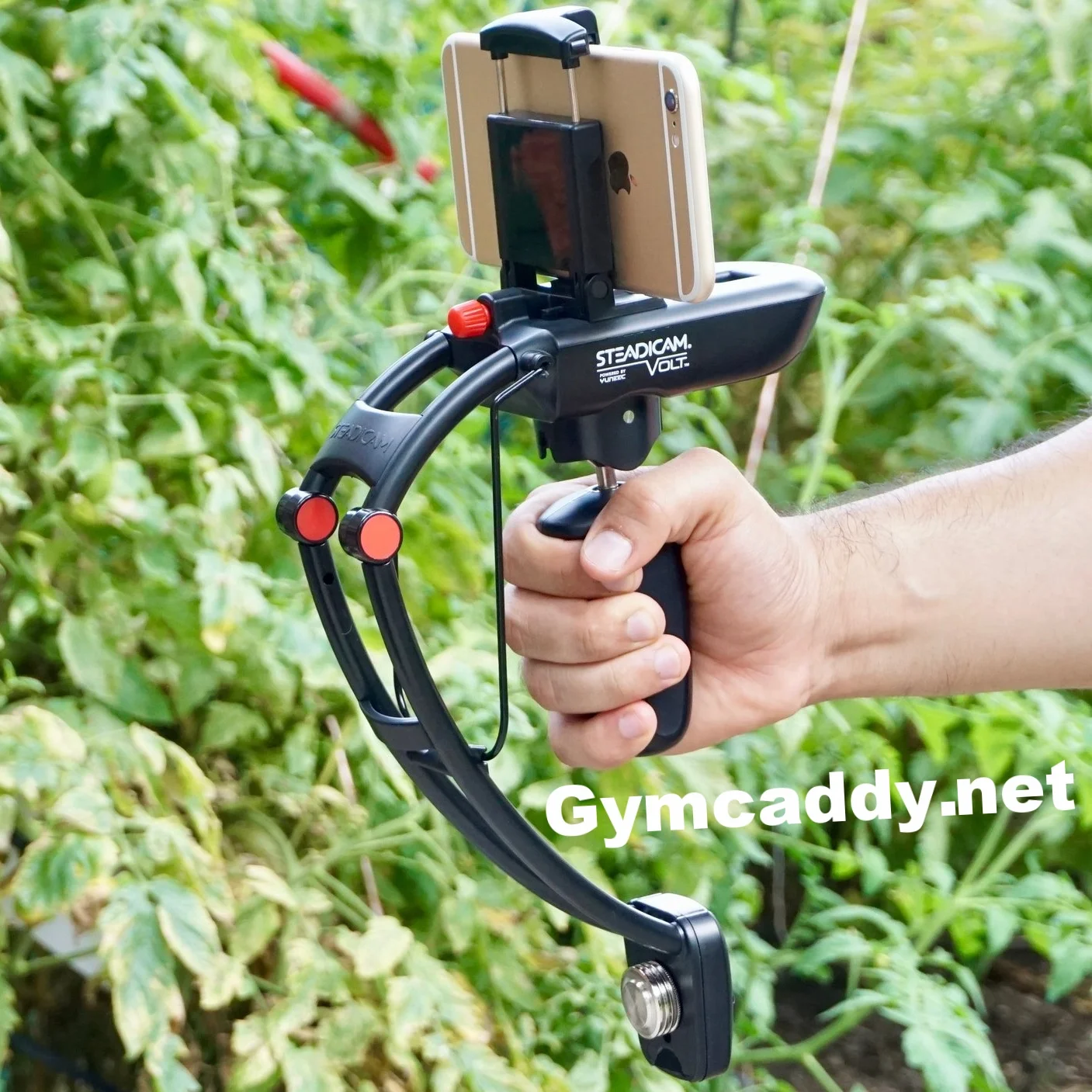Other Stuff You Might Like
Tiffen the creators of the original steadicam launched a kickstart campaign to fund their Steadicam Volt, a radically different stabilizer for your smartphone or gopro. And it seems like people are interested cause their campaign got funded by 1100%. But is it any good? we’re about to find out! don't forget to like comment and subscribe and you can watch some of my other videos here after you're done watching this video.
The Steadicam Volt currently retails for $199 and if you're interested in picking this product up I’ll have a link in the description below. The packaging on the Steadicam Volt is very nice. first you slide off the outer sleeve and then you lift the lid. You'll first see the instruction manual and a soft carrying case. You’ll then find 7 magnetic counter weights that are used to calibrate the Stradicam Volt. You'll then find the 2 rechargeable batteries and you’ll find their charging cradle and a micro USB cable. you can use any wall wart or USB slot on your computer to charge them. The lights on the cradle will flash red while charging and then flash blue when the batteries are fully charged. The Volt comes preinstalled with a cradle that will hold most smart phones but you also get an adaptor to attach a GoPro. over all the packing is great and if you don't spring for the hard shell carrying case you can always just use the box.
The steadicam volt is made mostly out of plastic and it weighs just one pound. but after shooting with it for over an hour you get a killer shoulder workout. Like i said earlier the Steadicam volt is only compatible with smart phones and some go pros, unfortunately you cant attach a point and shoot camera which is a let down. there are only two buttons on the device it self, theres an on off button and a button to switch between sport mode and movie mode. more on those in a second. on a full charge the steadicam volt will last you for 8 hours. in order to charge the device you have to take out the batteries and place them in their charging cradle. I just find it odd that you cant just charge the volt directly through a built in micro usb port. But Unlike other stabilizers, the Steadicam Volt doesn't require you to use an app to operate it.
Shoots taken with the Steadicam Volt are noticeably smoother but keep in mind my iPhone 6s Plus does help smooth out the video since it has optical image stabilization. But you will notice shoots taken with the Volt stay on the horizon better and theres much less wobbling. But even with the Volt you will notice some undulating in the video. There are no controls on the Volt itself, if you just hold on to the handle your phone or go pro will stay true to the direction its facing. But if you want to move the camera you just have to hold on to the main body of the volt and move your hand or you can just manually adjust it. Steadicam suggests you use two hands but you can get away with just using one hand. But using the steadicam Volt requires a very gentle touch. The main selling point Steadicam points out about the volt over more popular 3 axis gimbals like the Smooth Q is that the volt allows for fluid and much faster panning movements on the camera. Since you can manually adjust the camera you'll be able to keep up with the action better than with the slower joystick controlled Smooth Q. But to be honest I did find myself missing a joystick for certain shots here and there.
The steadicam volt makes it very easy to adjust the pitch of of your camera. you literally just set and go. Like i mentioned earlier there are two modes on the Volt. First theres the default Sport mode, basically theres more friction to the system and it takes more force to readjust the pitch of the camera. Then theres movie mode, basically theres much less friction on the system and just a single tap will send the camera gliding. where as if i did the same thing in sport mode the system will come to a rest much faster. in the hands of someone with a lot of experience movie mode can be used to get some awesome shots. But for me I just keep it in sport mode.
Even though the Steadicam Volt does a great job of keeping your camera steady you have to be mindful of your movements. If you move too much then the gimbal system will snag or your hand will either hit the counter balance or main body and ruin your shot. If you move the camera too fast then the pitch will start to change. But the biggest issue i noticed is that this system does not do well in windy environments. Basically your phone becomes a sail and if it gets hit by a gust of wind the camera will start to move making it useless for video recording.
for the most part people who look into getting a stabilizer for their phone or go pro are usually going to be daily blogging. So they are going to want to get shots of themselves and quickly switch to subject matter in front of them. The steadicam volt makes it very hard to film yourself with the back facing camera due to the counter balance on the front. you have to get creative with how you hold the device. Unless you're fine with using your front facing camera on your phone. The Steadicam Volt is better suited for capturing shots of subject matter in front of you than of yourself. And paying $200 to get stabilized shots with your phone is a bit steep and if you're looking into getting this because you're trying to produce higher quality videos its safe to assume you're either using a DSLR or a mirrorless camera. Don't get me wrong, phones these days have great video quality, its how i got started with this chanel… but using a dedicated camera really has its perks. I feel the steadicam volt is to expensive for the average joe and i feel its lacking in features and capabilities for someone with a bit more experience.
To be honest, I'm not a fan of the Steadicam Volt… for starters the 8 hour battery life is too short compared to other gimbals out there offering 12 hours of battery life at a cheaper price. and in my testing i haven't been able to get anywhere near an 8 hour battery life. The lack of physical controls means one handed operation requires a lot of dexterity or you have to use two hands instead. And theres no built in shutter button which means you have to press the phone screen and readjust the Volt again every single time you start recording. And If you're not mindful of your movements then you risk messing up your shots. For $200 I feel the steadicam volt should have built in physical controls and give you the option to operate it with a joy stick for minor movements or single handed operation and let you manually move it for fast and fluid shots. And I feel it should be compatible with certain point and shoots and miriness cameras. And I would have also liked if it had much larger batteries for a longer battery life. And not to mention better quality materials. But I feel the steadicam Volt as is should have been priced around $100 and marketed as a simpler and cheaper alternative to the current more popular 3 axis gimbal systems on the market.




